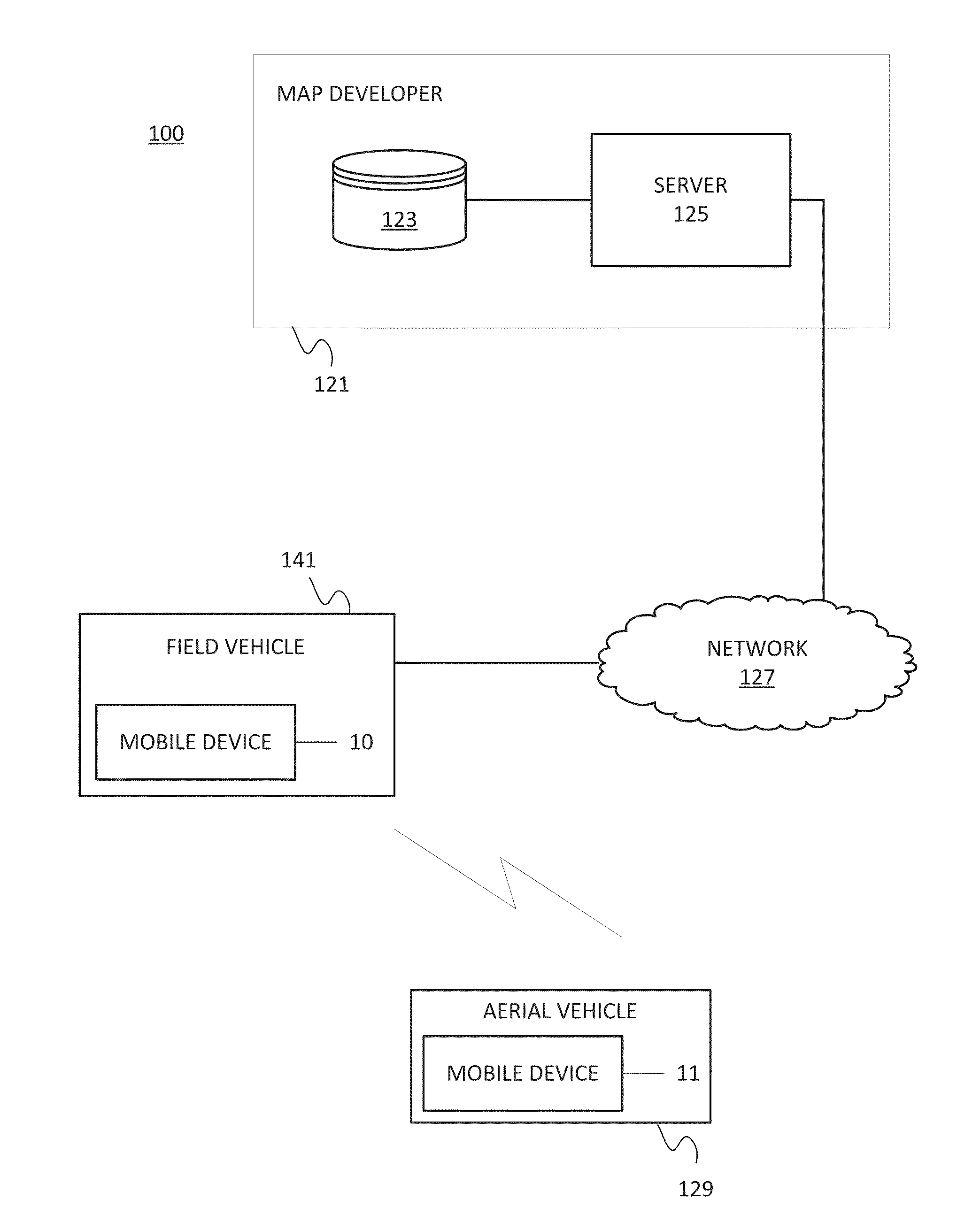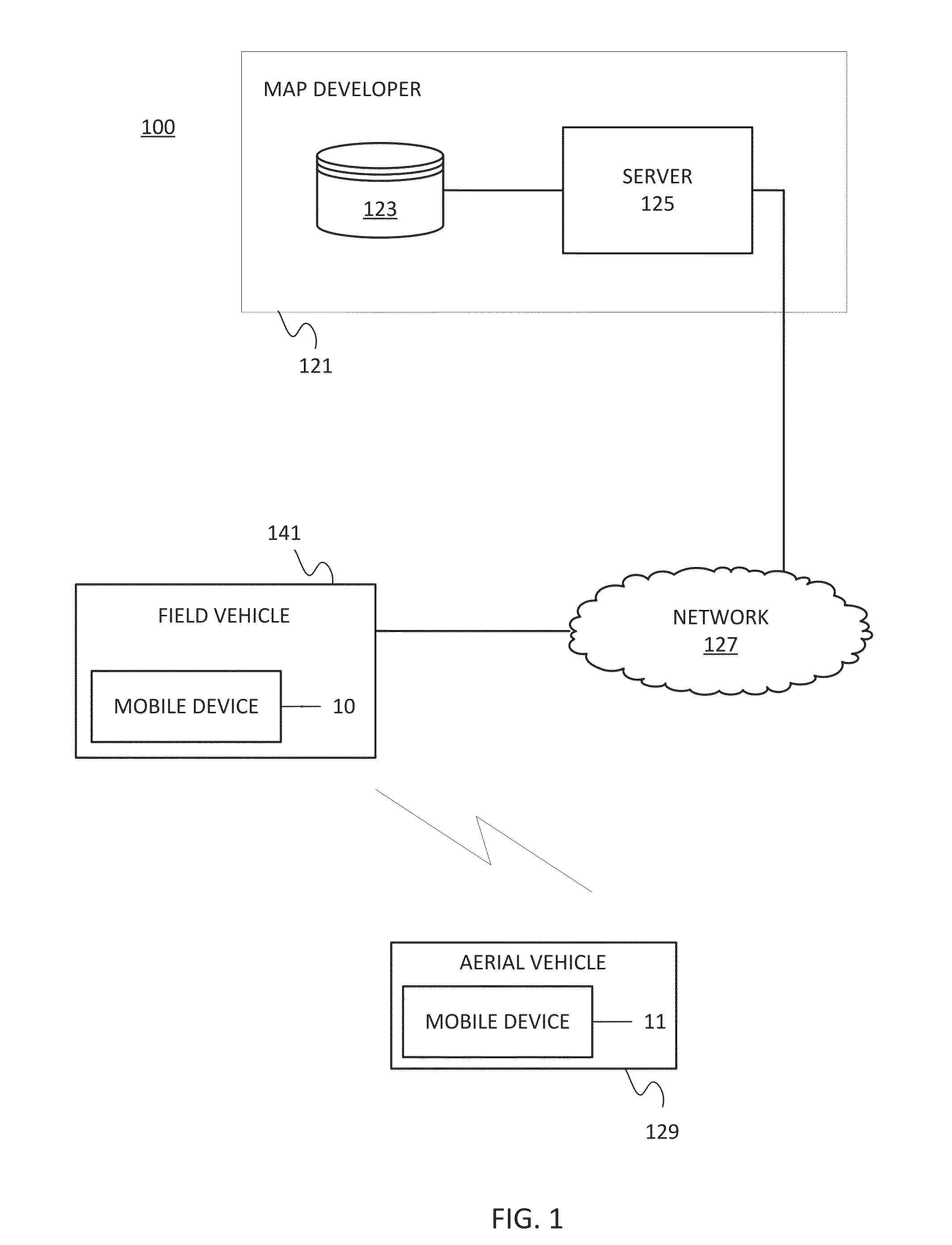Aerial image collection
a technology for aerial vehicles and images, applied in vehicle positions/courses/altitude control, process and machine control, instruments, etc., can solve the problems of large buildings that cannot be adequately photographed from vehicle-mounted cameras, road signs, and other obstacles that may occlude building facades from the view of vehicle-mounted cameras,
- Summary
- Abstract
- Description
- Claims
- Application Information
AI Technical Summary
Benefits of technology
Problems solved by technology
Method used
Image
Examples
Embodiment Construction
[0015]Street side imagery is collected by field vehicles equipped with cameras. The imagery is limited by the range of the cameras. For example, some portions of the building may be blocked by shrubs, trees, parked cars, people, or other objects between the field vehicle and the building facade. Also, high portions of the building facade may be out of range or out of the field of view of vehicle mounted cameras. An aerial vehicle may be used in cooperation with the field vehicle. The aerial vehicle may include a camera with a field of view that overlaps or otherwise supplements the camera in the vehicle. The aerial vehicle may track a field vehicle and follow the field vehicle. The image data collected by the aerial vehicle may be combined with the image data collected by the field vehicle. The aerial vehicle may be an autonomous vehicle such as an unmanned aerial vehicle (UAV). The aerial vehicle may be radio controlled helicopter (e.g., quadcopter or other helicopter).
[0016]The tr...
PUM
 Login to View More
Login to View More Abstract
Description
Claims
Application Information
 Login to View More
Login to View More - R&D
- Intellectual Property
- Life Sciences
- Materials
- Tech Scout
- Unparalleled Data Quality
- Higher Quality Content
- 60% Fewer Hallucinations
Browse by: Latest US Patents, China's latest patents, Technical Efficacy Thesaurus, Application Domain, Technology Topic, Popular Technical Reports.
© 2025 PatSnap. All rights reserved.Legal|Privacy policy|Modern Slavery Act Transparency Statement|Sitemap|About US| Contact US: help@patsnap.com



